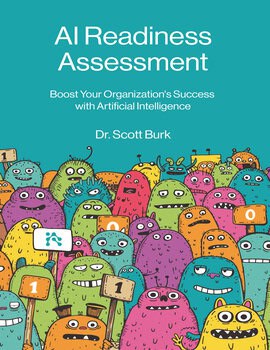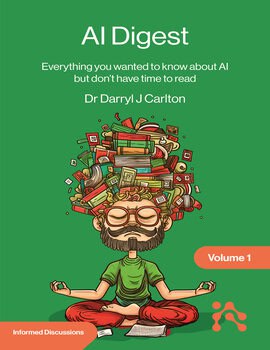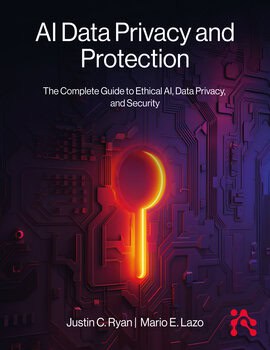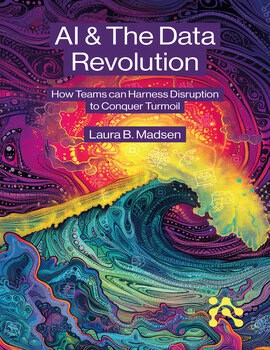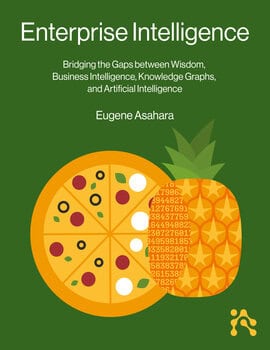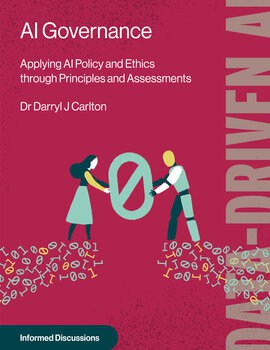AI Readiness Assessment
AI Readiness Assessment: Improve Your Organization’s Odds of Succeeding with Artificial Intelligence, by Dr. Scott Burk
Improve your organization’s odds of succeeding with artificial intelligence.
Topics
Introduction
SECTION I―The Essentials
Chapter 1: Organizational Commitment
Will your organization have the discipline to do it?
An important note for leadership
Leader and management roles
Important questions
Chapter 2: An Overview of the Assessment Process
- Organizational commitment
- Project team structure
- Top-level education and assessment customization
- Organizational communication
- Questionnaires and worksheets completed
Business goals and initiatives
Leadership assessment
Culture assessment
Operations and structure
Industry and market assessment
People assessment
Data assessment
AI technology assessment
- Assignments aggregated and analyzed
- Executive report and presentation
- Remediation and projects start
The six foundations for AI success
Business knowledge
Data knowledge
AI and analytics knowledge
Technology stack
Culture
People
Chapter homework
Section II―The Assessment
Chapter 3: Business Goals and Initiatives
Problems/opportunities/business case strategy
Chapter homework
Projects
Plant nursery improves revenue and gains customers
Chapter homework
Chapter 4: Leadership Assessment
Why leadership is important to AI project success
Organizational alignment
Leadership assessment for your organization
- Team selection
- Team education
- Brainstorming and open exchange
- Scoring assessment and gap identification
- Share findings with oversight committee for aggregation
Questions for discussion
Communication
Independence and trust
Trust and positive relations
Willingness to reward the learning experience
How do you handle failure and setbacks?
Alignment and collaboration
Commitment
Scoring assessment and gap identification
Identification of strengths and weakness / potential failure points
Chapter 5: Culture Assessment
Why culture is important to AI project success
Foundations of the new AI and analytics culture
Culture’s role in AI projects
Culture lessons from the AI front
Target business problems
Before the AI solution
Potential of an AI solution
Cultural strengths that led to project deliverable success
Culture assessment for your organization
- Team selection
- Team education
- Brainstorming and open exchange
- Scoring culture – assessment and gap identification
- Share findings with oversight committee for aggregation
Questions for discussion
Flexibility / adaptability and ability to change
Community, team strength, and innovation
Loyalty, commitment, and risk taking
Learning, improvement, and innovation
Scoring culture – assessment and gap identification
Identification of strengths and weakness / potential failure points
Chapter 6: Operations and Structure
Why operations and structure are important to AI project success
AI projects for human-in-the-loop operations
AI projects for human-out-of-the-loop operations
Structure versus culture
Operations and structure assessment for your organization
- Team selection
- Team education
- Brainstorming and open exchange
- Scoring assessment and gap identification
- Share findings with oversight committee for aggregation
Questions for discussion
Access to people across functions, roles, and hierarchy
Repetitive environment or creative environment?
Machine-based work or human-based work?
Novel environment or conventional environment?
Scoring operations and organizational structure – assessment and gap identification
Identification of strengths and weakness / potential failure points
Chapter 7: Industry and Market Assessment
Why industry and market are important to AI project success
Industry affects regulation, compliance, and more
Industry and market affect AI projects
Industry and market assessment for your organization
- Team selection
- Team education
- Brainstorming and open exchange
- Scoring assessment and gap identification
- Share findings with oversight committee for aggregation
Questions for discussion
Industry standards and processes
Industry and market education and innovation
Ability to respond to outside forces
Scoring industry and market – assessment and gap identification
Identification of strengths and weakness / potential failure points
Chapter 8: People Assessment
Why people are important to AI project success
The importance of domain knowledge
Community of practices strengthen data and AI literacy
True benefits of diversity
People assessment for your organization
- Team selection
- Team education
- Brainstorming and open exchange
- Scoring assessment and gap identification
- Share findings with oversight committee for aggregation
Questions for discussion
Skills and knowledge
Aptitude / willingness to learn
Open mindedness
Emotional intelligence
Desire to make positive changes
Drive, tenacity, and willingness to succeed
Team attitude
Scoring people – assessment and gap identification
Identification of strengths and weakness / potential failure points
Chapter 9: Data Assessment
Why data is important to AI project success
Data for AI projects
Types of data
Locations of data
Access to useful data
Customer service
Data assessment for your organization
- Team selection
- Team education
- Brainstorming and open exchange
- Scoring assessment and gap identification
- Share findings with oversight committee for aggregation
Questions for discussion
Data as a strategic asset
Investment made in data technology
Investment made on human support of data
Data quality and consistency
Data availability to personnel
Data security, governance, and compliance
Scoring data – assessment and gap identification
Identification of strengths and weakness / potential failure points
Chapter 10: AI Technology Assessment
Why an AI technology assessment is important to AI project success
The importance of partner relationships
Buying a packaged analytics or mobile app solution is an AI project
Call center optimization
AI technology assessment for your organization
- Team selection
- Team education
- Brainstorming and open exchange
- Scoring assessment and gap identification
- Share findings with oversight committee for aggregation
Questions for discussion
AI technology as a strategic asset
Investment made in AI technology
Investment made on human support of AI technology
AI tool availability to personnel
Scoring AI technology – assessment and gap identification
Identification of strengths and weakness / potential failure points
SECTION III―Project Selection, Remediation, and Kickoff
Chapter 11: Assignments Aggregated and Analyzed
Example aggregation of mapping tools
Strengths and weakness / potential failure points
Chapter 12: Executive Report and Presentation
Report and presentation team
- ARA report creation
- ARA presentation preparation
- ARA presentation meeting
Chapter 13: Remediation and Projects Start
Next steps
Three major steps with recommendations
Future state
Chapter 14: Parting Thoughts
Managers struggle to determine whether they have the right people, knowledge, data, and tools to compete in a new business landscape―a landscape revolutionized by AI. Although most leaders ‘hope’ that they have the ‘right stuff’, hope is not a strategy. Organizations must critically assess where they are currently and what gaps they must fill to be competitive in this new environment.
Through questionnaires and assessments covering eight critical dimensions, this book will help you build the foundation for a successful artificial intelligence program.
About Scott
Dr. Scott Burk has worked with companies of all sizes and industries for over 30 years. He has held executive and VP roles as well as hands-on positions in startups to Fortune 50 enterprises. He is the author of six books and has taught at several universities, including Baylor, Texas A&M, SMU, and CUNY SPS.
Faculty may request complimentary digital desk copies
Please complete all fields.
